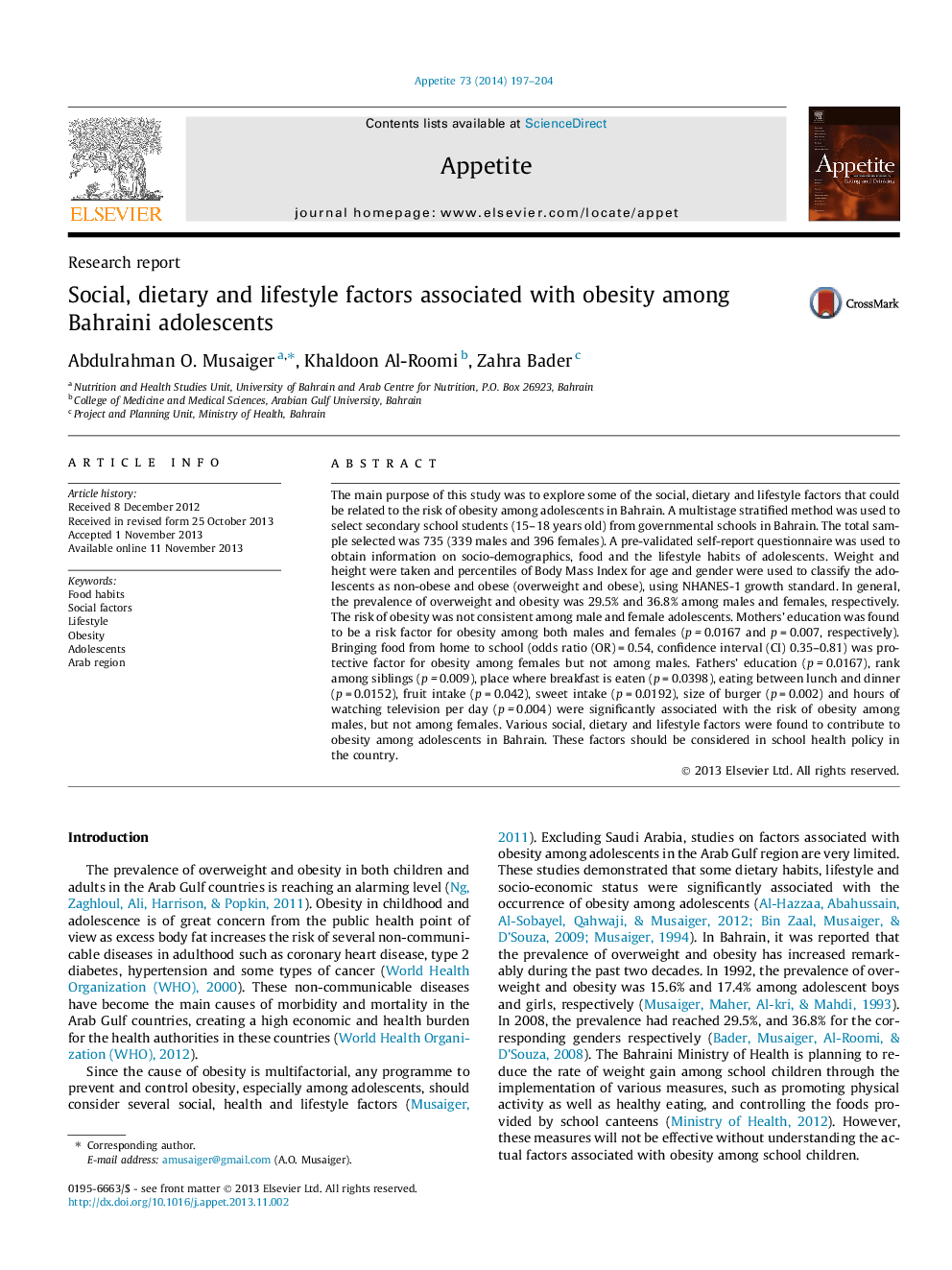| Article ID | Journal | Published Year | Pages | File Type |
|---|---|---|---|---|
| 7310707 | Appetite | 2014 | 8 Pages |
Abstract
The main purpose of this study was to explore some of the social, dietary and lifestyle factors that could be related to the risk of obesity among adolescents in Bahrain. A multistage stratified method was used to select secondary school students (15-18 years old) from governmental schools in Bahrain. The total sample selected was 735 (339 males and 396 females). A pre-validated self-report questionnaire was used to obtain information on socio-demographics, food and the lifestyle habits of adolescents. Weight and height were taken and percentiles of Body Mass Index for age and gender were used to classify the adolescents as non-obese and obese (overweight and obese), using NHANES-1 growth standard. In general, the prevalence of overweight and obesity was 29.5% and 36.8% among males and females, respectively. The risk of obesity was not consistent among male and female adolescents. Mothers' education was found to be a risk factor for obesity among both males and females (p = 0.0167 and p = 0.007, respectively). Bringing food from home to school (odds ratio (OR) = 0.54, confidence interval (CI) 0.35-0.81) was protective factor for obesity among females but not among males. Fathers' education (p = 0.0167), rank among siblings (p = 0.009), place where breakfast is eaten (p = 0.0398), eating between lunch and dinner (p = 0.0152), fruit intake (p = 0.042), sweet intake (p = 0.0192), size of burger (p = 0.002) and hours of watching television per day (p = 0.004) were significantly associated with the risk of obesity among males, but not among females. Various social, dietary and lifestyle factors were found to contribute to obesity among adolescents in Bahrain. These factors should be considered in school health policy in the country.
Related Topics
Life Sciences
Agricultural and Biological Sciences
Food Science
Authors
Abdulrahman O. Musaiger, Khaldoon Al-Roomi, Zahra Bader,
